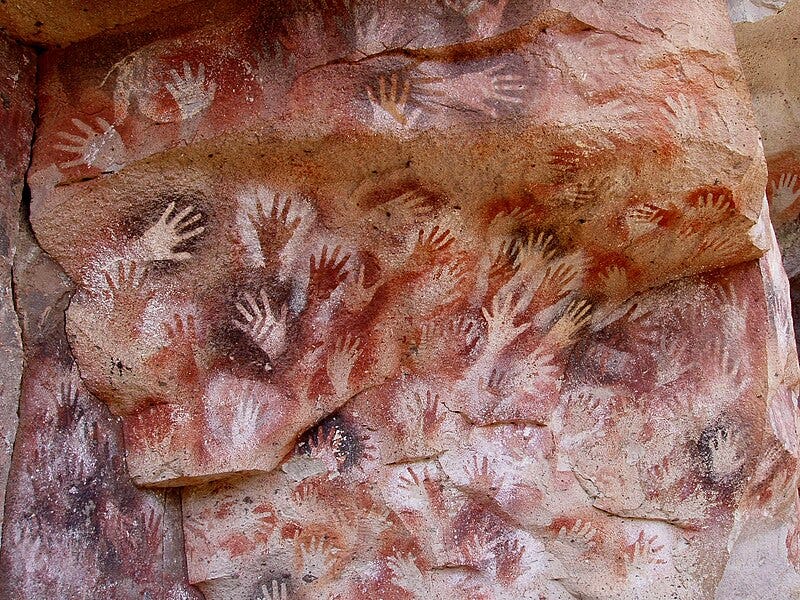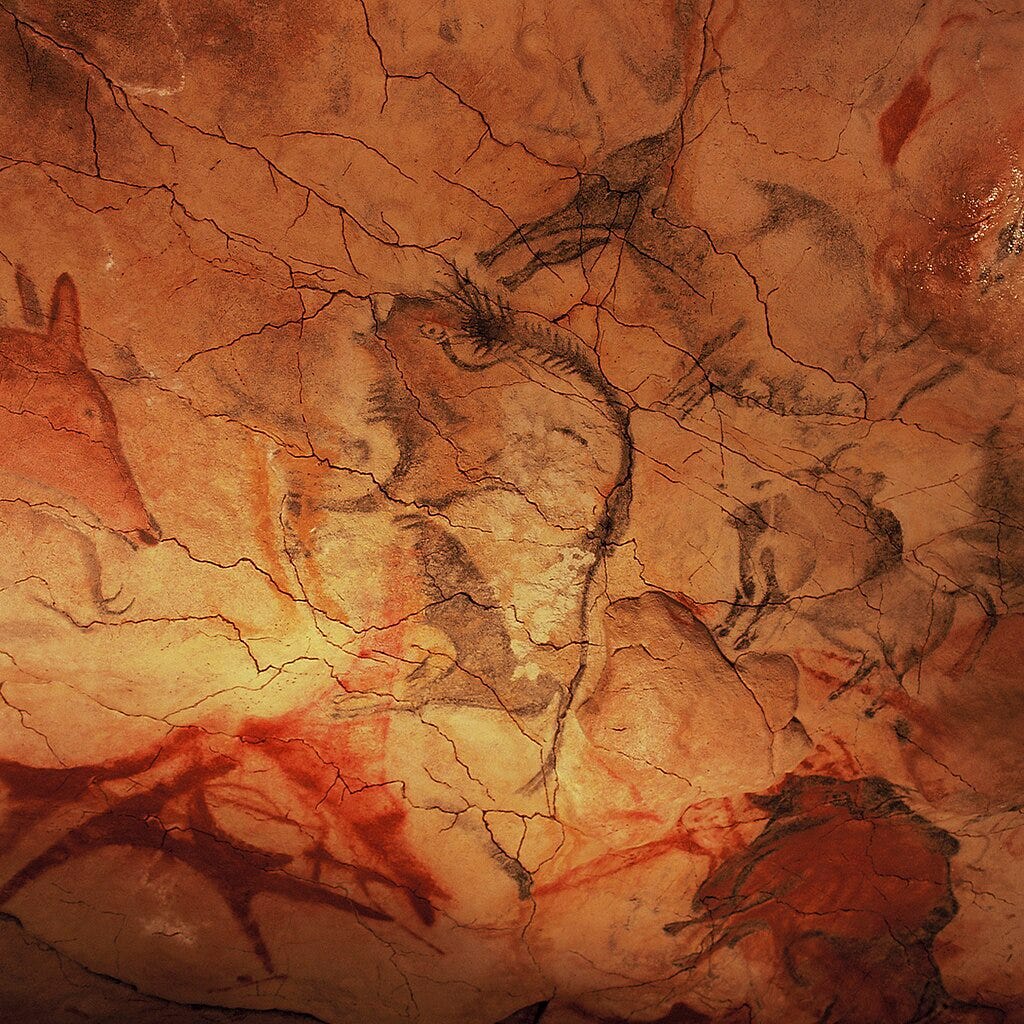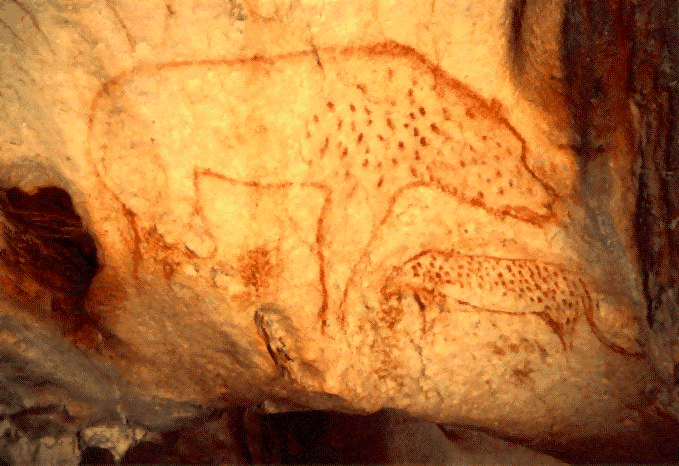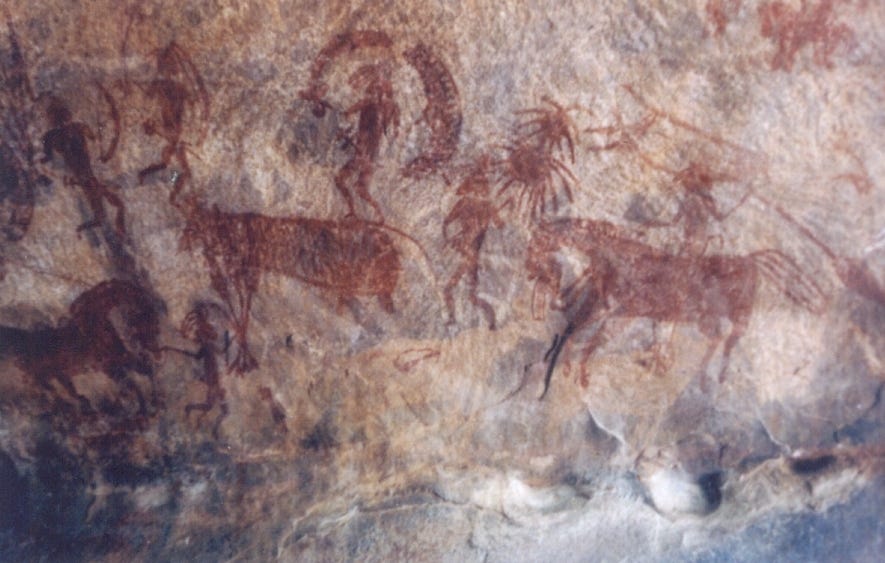The Oldest Art on Earth
Cave Walls Were the First Pages of our Story.
We are used to seeing art painted on a canvas. However, the oldest art in the world was carved onto stone and smeared on cave walls by hands that had never seen a city, a book, or a kingdom. But those hands did something extraordinary. They reached into the darkness and left behind a story.
Imagine stepping into one of those caves, thick air and absolute silence. No hum of machines. No footsteps but your own. Your breath echoes off stone that has held its secrets longer than any empire has stood. And then you see the drawings of bison, lions, and horses and the thought that went into them. Not just drawings but a window into the minds of people who lived 40,000 years ago.
And here’s the unsettling part: what they left behind might say more about us than we’re ready to admit.

Cave art is a message from an age when language was still being born, and the world felt enormous. These paintings and carvings are how our ancestors spoke across millennia. The story begins deep in the Ice Age. Around 40,000 years ago, early humans and their cousins entered caves with torches and pigment. They painted creatures they hunted, creatures they feared, and creatures they revered. These weren’t simple sketches. They showed movement, emotion, even perspective.

The most famous early discovery happened in 1879, when a landowner named Marcelino Sanz de Sautuola walked into Cave of Altamira in Spain with his daughter. She looked up and saw red bison dancing across the ceiling. It was so stunning that the scientific establishment refused to believe it was real. It took decades before the world accepted that Paleolithic people were artists.
That moment cracked open an entire field. Soon after, Chauvet Cave in France and Cosquer Cave followed. These places weren’t accidental shelters. Those sites were hidden and sacred. Some caves go even further back. In Maltravieso cave in Spain, a red hand stencil dated to over 64,000 years ago. That’s long before Homo sapiens dominated Europe. It suggests that Neanderthals painted it. A ghost of a vanished species left its mark.
![Cave of Pettakere, Bantimurung district (kecamatan), South Sulawesi, Indonesia. Hand stencils estimated between 0,000 years old[50] Cave of Pettakere, Bantimurung district (kecamatan), South Sulawesi, Indonesia. Hand stencils estimated between 0,000 years old[50]](https://substackcdn.com/image/fetch/$s_!CbwO!,w_1456,c_limit,f_auto,q_auto:good,fl_progressive:steep/https%3A%2F%2Fsubstack-post-media.s3.amazonaws.com%2Fpublic%2Fimages%2Fd31955e4-ab4d-4963-a877-7ac79299f470_464x413.jpeg)
Half a world away, in Sulawesi, Indonesia, a painted pig tells another story. Its age, over 45,000 years, makes it one of the earliest figurative artworks known. It’s not just a doodle. It’s a scene. People hunting pigs. A story frozen in time.
Here’s where the story shifts. These weren’t just drawings. They were messages. And what they reveal about how humans began to think, believe, and imagine is far more unsettling and beautiful than we often admit.
Keep reading with a 7-day free trial
Subscribe to The Culture Explorer to keep reading this post and get 7 days of free access to the full post archives.



